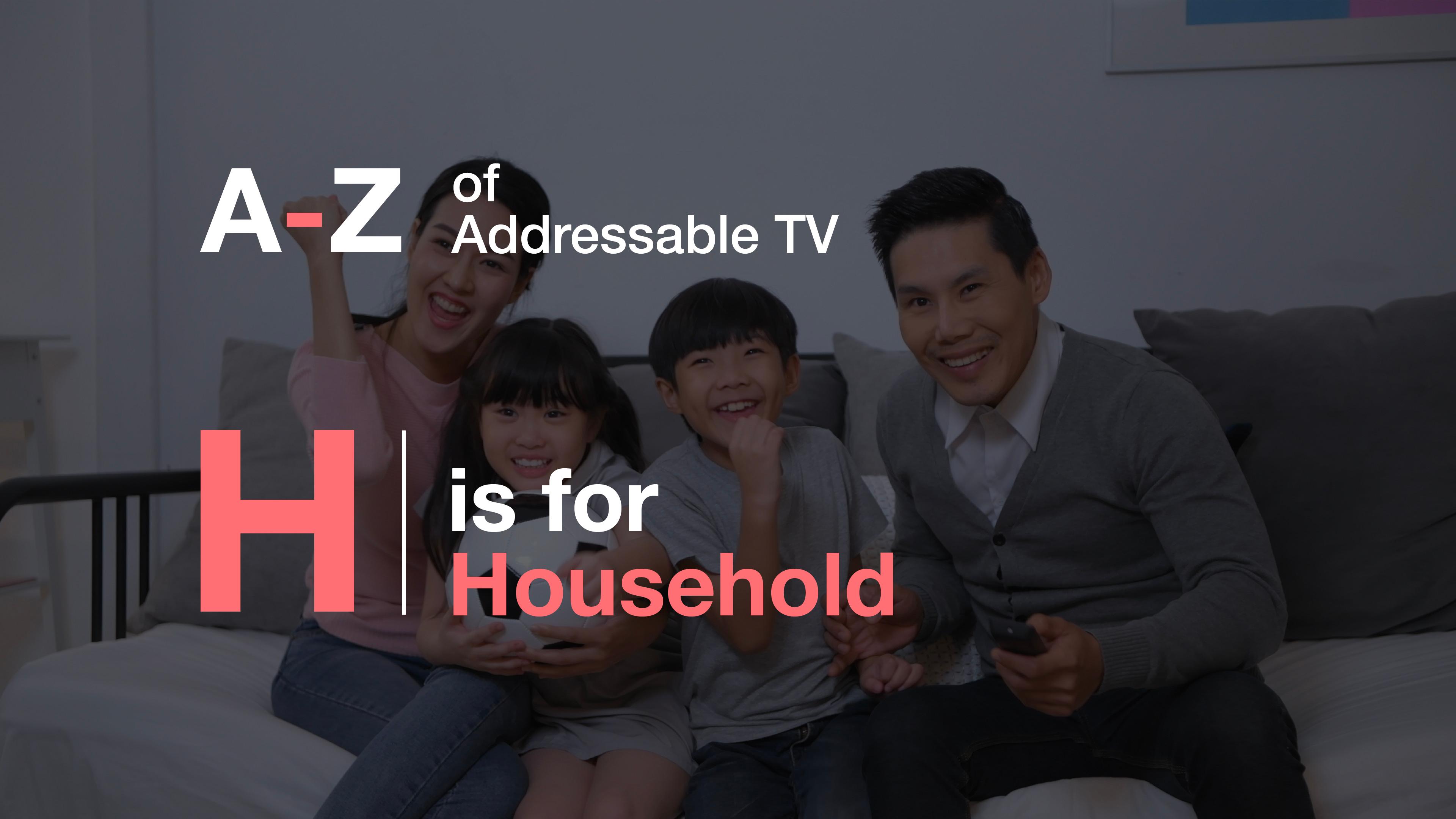A-Z of Addressable TV: H is for Household Targeting

In the “A-Z of Addressable TV” series, we introduce some of the key terminology, technical aspects, and target audiences involved in addressable TV and explain how they enable advertisers to discover and reach new audiences. From ‘Addressable’ to ‘Gen Z,’ we’ve got you covered.
H is for Household Targeting
What is Household Targeting?
Household targeting means reaching specific audiences with ads specially selected for them through the use of postcode-level data. This, in turn, leads to impactful engagement for brands.
Household targeting is achieved using appropriately-sourced data (more on that later) and allows brands to reach groups of households (and crucially, potential customers) with their creative. This benefits both the brand and the consumer. First, it ensures that viewers are seeing ads that are the most relevant for them and, therefore, more engaging. Second, for the brand, this level of targeting reduces ad wastage compared with traditional advertising (where brands serve ads based on time and channel) and supports the entire sales funnel. For example, brands can support long-term brand building by efficiently reaching new audiences on various platforms or focus on short-term KPIs based on time-sensitive offers or promotions.
A group of households in a specific postcode may be served ads for various reasons including, but not limited to, their proximity to a particular brand’s store, their purchase history for similar products, or because they’re within a certain income demographic.
How does Finecast facilitate household targeting?
Thanks to insights sourced from a range of best-in-class data providers, broadcasters, and OTT providers, Finecast’s addressable TV solution can get insights at a group household level.
Audience analysis is carried out in partnership with the content providers, then combined with licensed third-party data to create an accurate picture of a household. This third-party data can include everything from age and gender information to purchase behaviour data points and more.
With this information, Finecast confidently serves advertising content to the households most likely to engage with it – going beyond simple regional, time, or channel-based advertising to raise brand awareness and, ultimately, sales.
How does household targeting relate to an individual?
When we talk about postcode-level data, this refers only to geographical segmentation – i.e. understanding the behaviours and characteristics of the UK population based on general residential location, never an individual household.
As Finecast’s Senior Director of Data Solutions, Samantha Lister, explains in her recent Ad Spotlight article, “No matter what data is collected on TV it is never going to reveal who you are as an individual or anything intimate about you.”
“The data we collect isn’t about individuals; it’s about a device and is turned into a number and data point… At Finecast, we use relevant and smart data points to improve the experience for viewers and brands.”
Let’s look at an example of household targeting in practice…
One key partnership that we use to achieve effective household targeting is with Nectar360. Since 2021, Nectar360 data, such as purchase categories, shopping behaviour and consumer habits, has been integrated into Finecast’s addressable TV offering. This allows us to identify key audiences for brands in the FMCG space. When this information is combined with other data points like location and socio-economic status, brands can increase their return on ad spend by reaching the households – and audiences – that matter to them.
A prime example of this is the Japanese food manufacturer, Kikkoman, who wanted to drive awareness and sales of their soy sauce range. Through our partnership with Nectar, powered by Liveramp, we identified Sainsbury’s transaction data for shoppers purchasing soy sauce products. Then, we combined this with YouGov data on ‘45-and-overs’ with adventurous food tastes and created a unique audience segment that was statistically modelled to postcode-level for campaign activation.
The impact was significant: 86% of viewers exposed to Kikkoman’s creative felt positive about the ad and more than 4 out of 5 were likely to purchase the brand in the future.
For more information on how addressable TV can work for you, get in touch via the form below. And catch up on the full A-Z series to date here.




